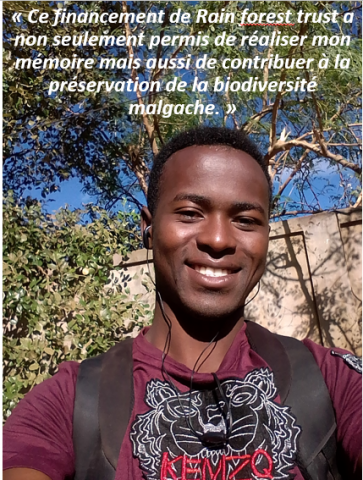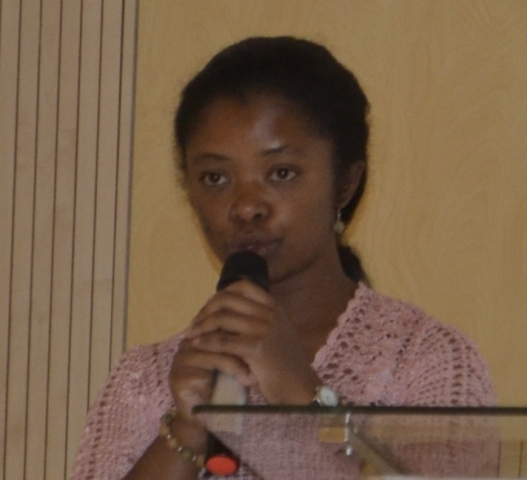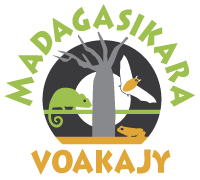Ortega nous partage son expérience aucours son mémoire!
BAVARY Ortega Georgino (This email address is being protected from spambots. You need JavaScript enabled to view it.) est l’une des cinq étudiantes en Master de l’université d’Antsiranana qui ont, grace au financement de RFT Rain Forest Trust et en collaboration avec Madagasikara voakajy, on pue terminer leurs mémoires de Master. Le thème de sa mémoire est : INVENTAIRE DE CHAUVES-SOURIS POUR LA MISE EN PLACE DE LA NOUVELLE AIRE PROTEGEE COMPLEXE BOBAOMBY, REGION DIANA, NORD DE MADAGASCAR
Il nous partage son expérience au cours de la réalisation de son mémoire.
La collecte de données sur terrain a été une grande aventure pour moi. J’ai beaucoup apprécié l’ambiance, les moments partagés avec les autres stagiaires et les villageois, le travail en équipe et le partage des connaissances lors des restitutions. Mon leader qui m’a transmis son savoir et qui n’a cessé de m’encourager depuis le début de ce mémoire. Travailler avec l’équipe de micromammifère m’a fait sentir utile. J’ai pu me servir des matériels que je ne savais pas utiliser auparavant comme le GPS, filet japonais,





